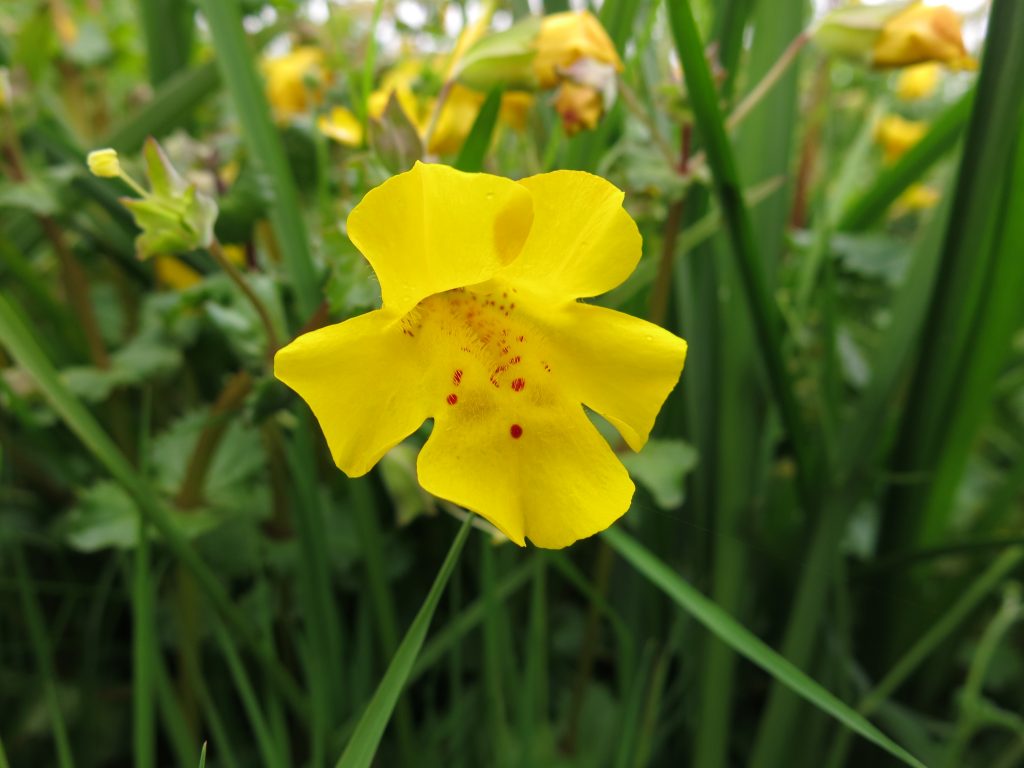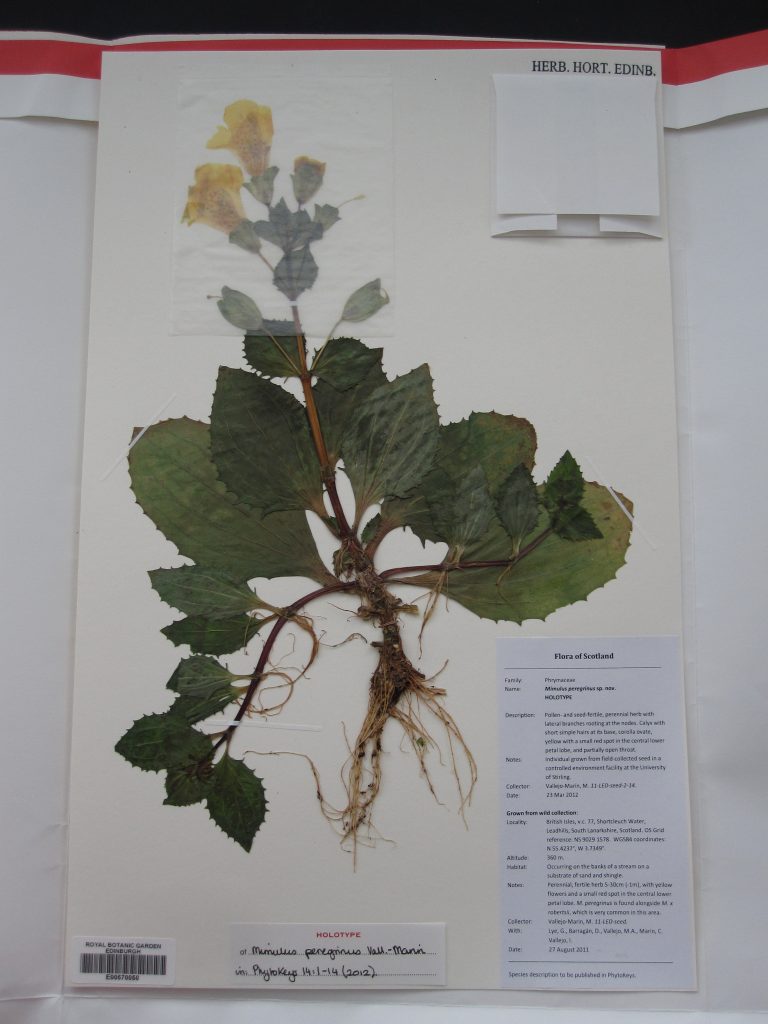
Mimulus peregrinus photographed at the Orkney population newly published (May 2015) as a second independent origin of this allopolyploid Scottish endemic species. Copyright: Mario Vallejo-Marin.
The New to Science blog is a regular post about new plant species as they are being named, described and published for the first time. The only requirements for inclusion are that the plants are named by scientists at the Botanics and published during the current year.

Mimulus peregrinus is distinguished from the widespread M. guttatus by red spots or blotches on the corolla and a corolla throat that is more or less open. Copyright: Mario Vallejo-Marin.
Inevitably a plant was going to come along that would temp me to break these loose rules. How often does the chance arise to profile a species unique to Scotland that is still relatively new to science and has a great and developing story behind it? The short answer is almost never. The plant in question is Mimulus peregrinus, a monkey-flower in the family Phrymaceae. Mimulus peregrinus was described as new to science in 2012 after being discovered in the Leadhills area of South Lanarkshire. The genus Mimulus is predominantly American in distribution, but various American species have become popular ornamentals in British gardens. It is this popularity that brought two American species together for the first time and set the scene for the evolution of an entirely new species in Scotland.
Hybridisation is the key to the evolution of Mimulus peregrinus. The parent species are Mimulus guttatus, which extends from Alaska to Mexico and Mimulus luteus from Chile. Without human intervention these species are separated by several thousand miles and could never hybridise. Closely related plants can form fertile hybrids if their chromosome counts match up. If the parents have different numbers of chromosomes offspring may be formed, but they are typically sterile. This is the situation for the hybrid between M. guttatus and M. luteus, which goes by the name M. x robertsii. However, this need not be the end of the evolutionary line. Rare instances of genome duplication will restore a balanced set of chromosomes enabling normal reproduction to resume.
We don’t know quite when the rare duplication event took place, but the distinctive genetic signatures of both the parents make it clear that a normally sterile hybrid plant did indeed experience this rare event and a new species was created. An important consequence of the duplication event is that the new species is reproductively isolated from both parental species.
An exciting recent development in this story, and the reason it satisfies my desire to report current research, is that a second population of Mimulus peregrinus has recently been discovered in Orkney with details published in May this year in the journal Evolution. Mario Vallejo-Marin at Stirling University, who originally discovered and described this species in South Lanarkshire, has gone on to find a second population on Orkney. Although the new population is clearly the same species, genetic differences support the view that it had an independent origin. This is a rare but not a unique situation. Other species that have arisen in the same way have had multiple origins. Against all the odds Scotland actually has another example in the form of Senecio cambrensis, Welsh groundsel, which arose independently in Wales and Scotland.
Follow this link to the original publication of Mimulus peregrinus.


Jane Jenkinson
I have just come across a large cluster of mimulus peregrinus along the banks of a burn, Altyre Estate, Moray. Photograph available, should you be interested.
FRANK ANDERSON
i thought it was shetland not orkney ,or are they on both